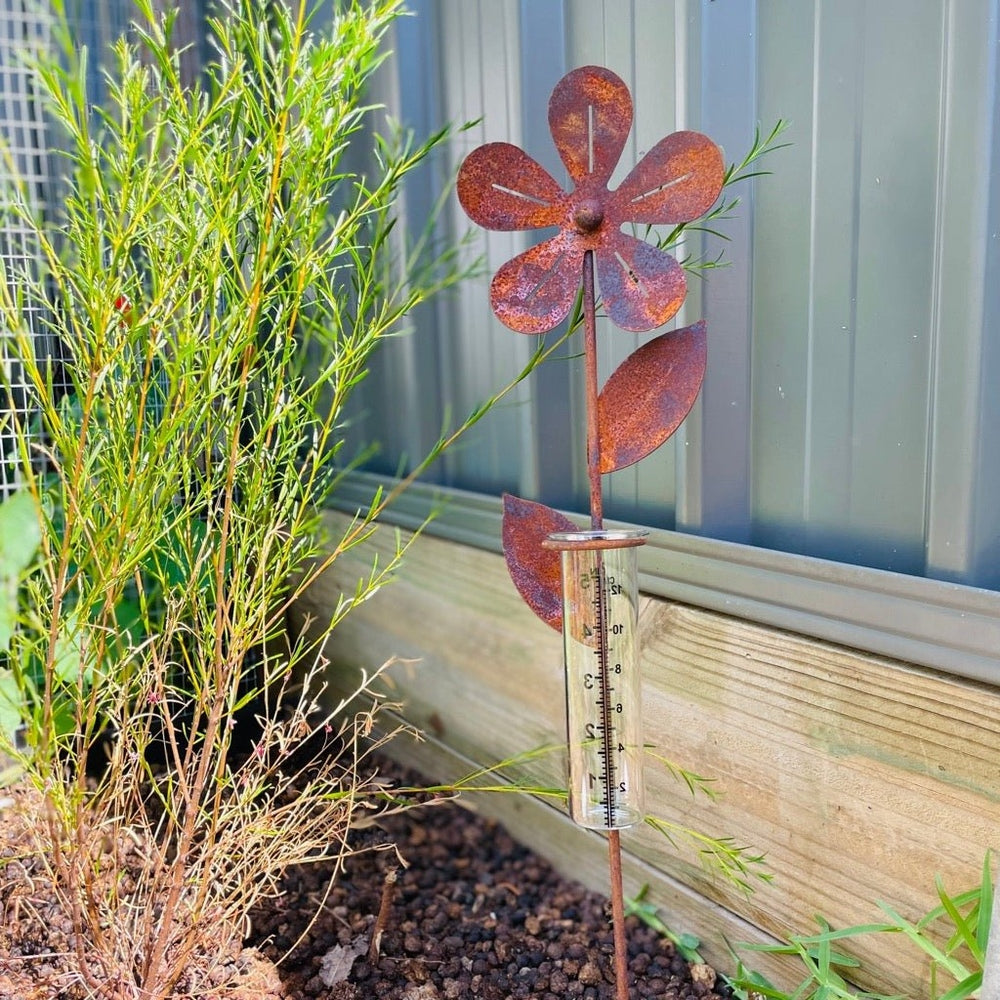The Advantages of Setting Up an Accuracy Rain Gauge for Your Weather Station
The Advantages of Setting Up an Accuracy Rain Gauge for Your Weather Station
Blog Article
Introducing the Science Behind Rainfall Gauges: Exactly How These Devices Play an Essential Duty in Environment Research and Ecological Monitoring
Rainfall determines, seemingly basic tools, hold a profound significance in the realm of environment study and environmental surveillance. These plain tools quietly accumulate among nature's most vital elements-- rains. Yet, behind their unpretentious exterior lies an intricate scientific research that is crucial for recognizing the dynamics of our atmosphere. As we peel back the layers of this clinical shroud surrounding rainfall determines, we reveal a globe where accuracy, information precision, and meticulous observation merge to reveal a deeper understanding of our changing environment and its influence on the earth.
Value of Rainfall Scales
Rainfall gauges play an indispensable duty in monitoring and gauging precipitation levels, providing necessary data for environment research study and analysis. These tools are basic in measuring the amount of rainfall that occurs in a specific location over a particular duration. By accumulating and gauging rainwater, rain assesses offer important insights right into the distribution and intensity of rainfall, aiding meteorologists, hydrologists, and climatologists in comprehending weather patterns and fads.
Furthermore, long-lasting information accumulated from rainfall determines aids in analyzing climate modification effects and patterns, adding dramatically to scientific research and decision-making processes. In essence, rainfall gauges serve as vital devices in the area of weather forecasting and ecological scientific research, playing a critical duty in advancing our understanding of weather and climate dynamics.
Kinds of Rain Scales

Functionality and Operation
In the realm of environment study and meteorological researches, the performance of rainfall gauges lies in their detailed performance and precise functional mechanisms. Rainfall evaluates are made to precisely measure the amount of precipitation that drops over a particular location during a collection period.
The performance of rainfall assesses is based on the concept of gathering and determining rain in a standardized fashion. This collected information is critical for recognizing regional climate patterns, tracking long-term environment fads, and analyzing ecological influences. To make certain exact dimensions, rain determines demand to be purposefully positioned in open locations away from obstructions such as structures or trees that might conflict with the collection process.
The functional aspect of rain determines includes routine maintenance to protect against debris build-up, calibration checks to keep measurement accuracy, and data videotaping for analysis (rain gauge). In general, the capability and procedure of rain determines are vital for gathering reliable precipitation data important to climate research study and environmental monitoring
Role in Climate Research
Given the crucial significance of precise Full Article precipitation measurements in understanding climate patterns and ecological impacts, the role of rainfall determines in environment study is crucial. Rainfall evaluates supply essential information for environment research by measuring the amount of precipitation that tips over a certain area throughout a given period. This information is crucial for keeping an eye on long-lasting patterns in precipitation patterns, assessing the influence of environment change on rains circulation, and boosting environment designs.

Climate scientists utilize data gathered from rainfall evaluates to evaluate variations in precipitation degrees, determine regional environment patterns, and examine the performance of water source monitoring methods. By comparing historical rainfall information with current dimensions, scientists can identify shifts in rainfall patterns, such as modifications in the regularity or intensity of rains events. This details is important for recognizing how climate adjustment is influencing rainfall characteristics and can assist policymakers make informed choices relating to adjustment and reduction methods.
Applications in Ecological Monitoring

In flood forecasting, rain gauge data helps to track rains intensity and circulation, permitting authorities to release prompt cautions and take required Learn More procedures to minimize flooding threats (rain gauge). Drought surveillance relies upon rain gauge data to assess dampness degrees in the soil and track rainfall deficiencies, helping in the identification of drought-prone areas and the implementation of dry spell action methods
Moreover, rainfall scale information plays a crucial role in water source management by giving details on water schedule and usage trends. This information is used to make enlightened choices concerning water allotment, preservation steps, and lasting water resource preparation. Furthermore, in agriculture, rainfall gauge information assists farmers in maximizing watering schedules, plant selection, and general farm monitoring techniques based on neighborhood precipitation patterns. On the whole, rain determines are crucial devices in environmental tracking, offering useful understandings that contribute to informed decision-making and lasting resource monitoring.
Conclusion
In final thought, rain assesses are crucial devices for measuring precipitation, providing valuable data for climate study and environmental tracking. With various types and capabilities, rain evaluates play a critical duty in understanding rainfall patterns and their influence on the atmosphere. By precisely determining rains, these devices contribute to the development of scientific understanding and assistance in making informed decisions pertaining to water resource management and catastrophe readiness.
Rain evaluates play a vital role in monitoring and determining rainfall degrees, offering vital information for environment research and evaluation. The basic rain scale, my blog understood as the "tipping pail" scale, is one of the most typically made use of tools. Ultrasonic rain assesses use noise waves to discover the existence of rain, offering real-time information on rainfall levels.Climate scientists make use of data accumulated from rainfall assesses to examine variations in rainfall degrees, identify regional climate fads, and review the effectiveness of water source monitoring techniques.In verdict, rain evaluates are important tools for gauging rainfall, offering important data for environment study and ecological tracking.
Report this page